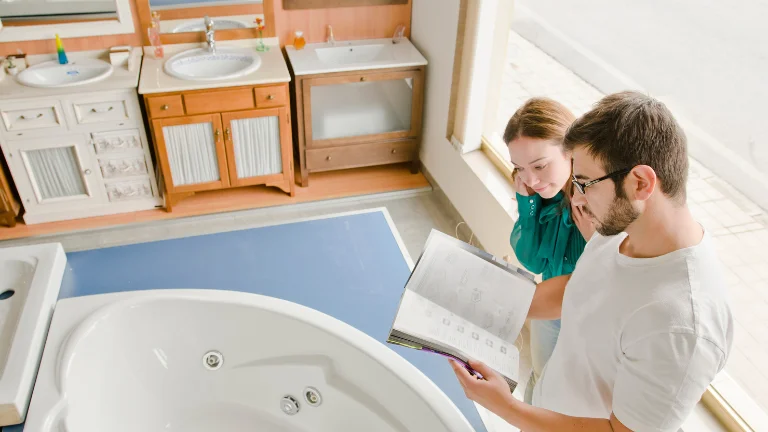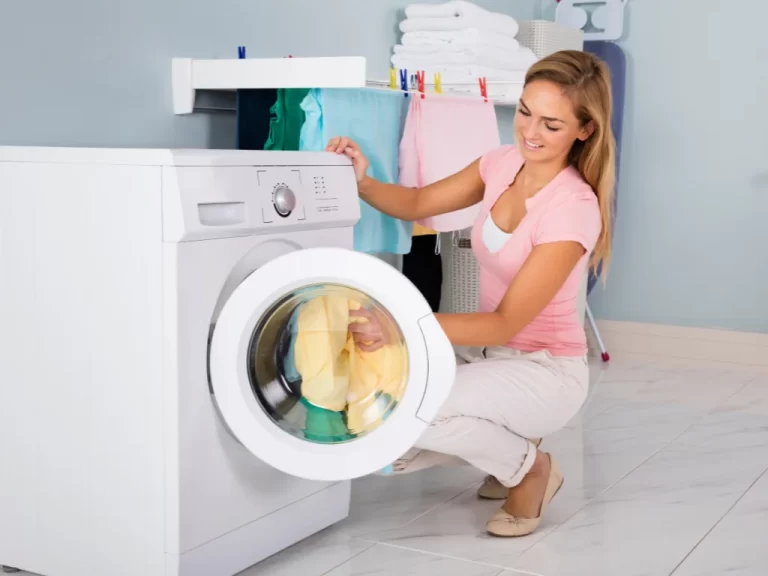Small Sauna Room Designs That Save Space at Home
Small sauna room designs make relaxation possible even in tight spaces. These layouts use smart benches, vertical heaters, and glass doors to open up the room. Prefab kits, corner saunas, and infrared models are great for small homes or apartments. They’re stylish, efficient, and easy to install almost anywhere.
- A cozy escape doesn't need a big footprint
- How small can a sauna really be
- Smart layouts that maximize space
- Materials that make small spaces feel bigger
- Sauna Type Comparison for Small Spaces
- 🧰 How to Build a Small Sauna Room at Home
- Real-life small sauna ideas
- Budget and installation tips
- Common mistakes to avoid
- 🧠 The Psychology of Heat and Space
- 📊 Sauna Space Stats: Small vs. Standard
- 💬 Designer Tips: Making Small Saunas Feel Luxe
- 🧾 Mini Sauna Maintenance Checklist
- 🌿 Wellness Benefits of Compact Saunas
- FAQs
A cozy escape doesn’t need a big footprint
If you’ve always dreamed of having a sauna but assumed you needed a luxury spa or a full basement remodel, think again. Small sauna room designs have become the go-to for homeowners craving daily relaxation without giving up valuable square footage. With the right layout, light, and materials, even the tiniest space can turn into a soothing wellness retreat.
For more inspiration, see our saunas and bath guide that explores styles and options perfect for home relaxation.
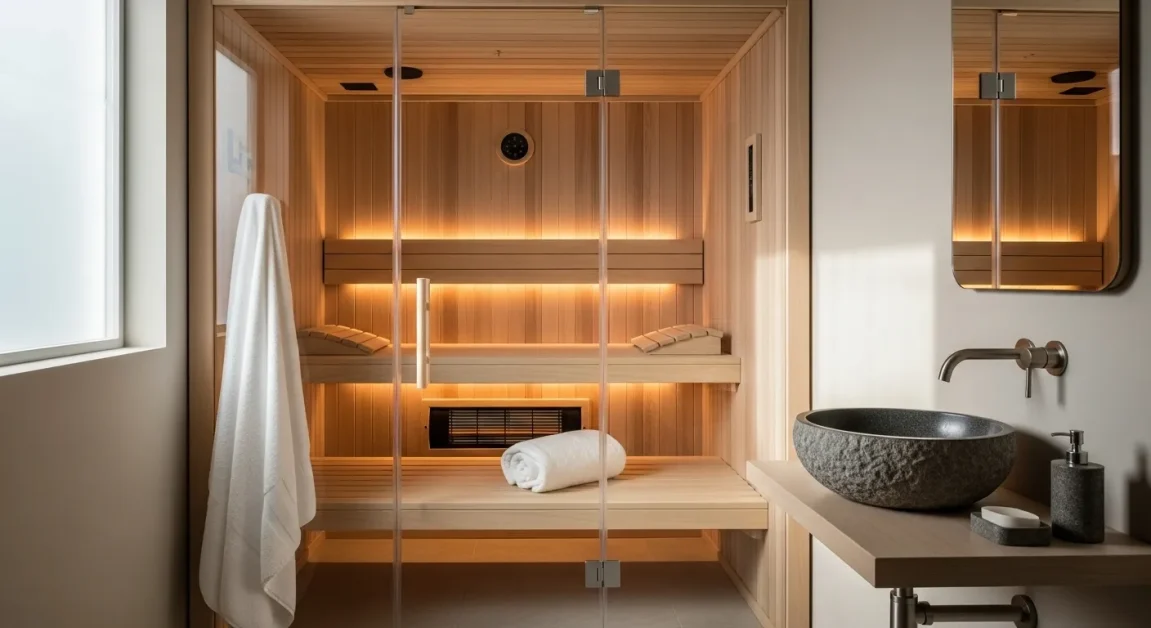
How small can a sauna really be
When space is tight, size matters, but not as much as you’d think. The smallest functional home saunas can start at just 4×4 feet, offering enough room for one or two people to sit comfortably.
A few design benchmarks to keep in mind
- Ceiling height: Around 6.5–7 feet is ideal for even heat circulation.
- Heater clearance: Leave at least 3 inches between heater and wall.
- Bench depth: 18–24 inches for sitting, 36 for reclining (if possible).
Even a closet, alcove, or unused bathroom corner can be transformed into a small yet mighty sauna. The key is to plan around the room’s shape and ventilation, not fight it.
Smart layouts that maximize space
A clever layout makes all the difference. Here’s how designers make tiny saunas feel open and intentional
- Corner saunas: Fit snugly into unused angles of bathrooms or basements.
- L-shaped benches: Create layered seating without a bulky footprint.
- Floating benches: Visually lighten the space and make cleaning easier.
- Glass doors and walls: Reflect light and open up sight lines.
- Vertical storage: Hooks, narrow shelves, or cubbies keep essentials within reach.
If you’re converting an existing room, think multi-purpose, like a bathroom sauna combo or a small outdoor pod that doubles as a cozy backyard retreat.
Explore more modern sauna design ideas for creative ways to balance function and beauty in compact spaces.

Materials that make small spaces feel bigger
When every inch counts, your material choices define how a sauna looks and feels.
Light woods such as hemlock, aspen, or cedar give a fresh, airy vibe, while darker stains can make the space feel more enclosed.
A few design tricks
- Use horizontal slats to visually widen narrow walls.
- Add hidden LED lighting under benches or behind trim to create depth.
- Opt for tempered glass doors or panels to keep things feeling open.
- Stick with matte finishes because glossy materials can fog easily in humid air.
Don’t forget about what’s behind the walls, either. Quality insulation and vapor barriers keep heat efficient and moisture in check.
Sauna Type Comparison for Small Spaces
Choosing the right sauna isn’t just about style, it’s about how it fits your lifestyle and space. This quick comparison table breaks down the three most common sauna types, Infrared, Traditional, and Steam, to help you decide which one works best in your home.
| Sauna Type | Energy Use | Ventilation Needs | Ideal For |
|---|---|---|---|
| Infrared | Low | Not required | Apartments, bedrooms, small condos |
| Traditional Electric | Medium | Moderate | Standard homes, basements |
| Steam Sauna | High | High | Larger bathrooms, spa-style setups |
⚡ Quick Insights
- Infrared saunas are the most energy-efficient, heating up fast with minimal ventilation.
- Traditional saunas deliver that authentic “hot wood” experience but need moderate airflow.
- Steam saunas create rich humidity and deep heat, ideal for spa enthusiasts with space to spare.
Each option brings a different kind of comfort and understanding these details helps you balance heat, space, and energy bills more effectively.
📂 Download the Comparison Data
If you’d like to explore or share this data, you can download the full dataset below. It includes all variables and measurements used for small sauna performance comparisons.
🔽 Download Sauna Comparison CSV
(File format: text/csv updated November 2025)
Before selecting a heater, review our detailed post on sauna safety essentials to understand temperature control and proper installation.
🧰 How to Build a Small Sauna Room at Home
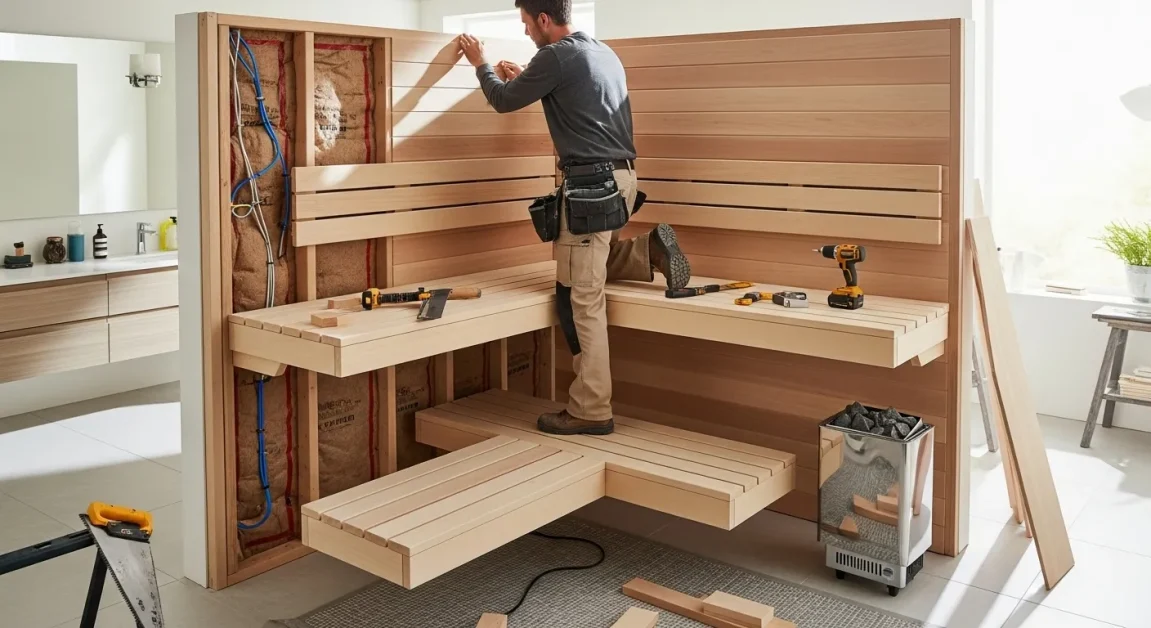
Creating a personal sauna doesn’t have to mean a massive remodel. With the right tools, materials, and a little planning, you can design and install a compact sauna that fits comfortably in your home, if it’s tucked into a bathroom corner or built as a cozy backyard pod.
🕒 Time & Budget
- Total time: About 8 hours for a basic kit assembly
- Estimated cost: Around $3,500 USD depending on materials and heater type
🧱 What You’ll Need
Supplies
- Sauna kit or prefabricated wall panels
- Heater unit (infrared or electric)
- Insulation and vapor barrier rolls
- Thermometer and hygrometer
Tools
- Drill and drill bits
- Level for alignment
- Measuring tape
🪜 Step-by-Step Guide
1. Measure and prepare your space
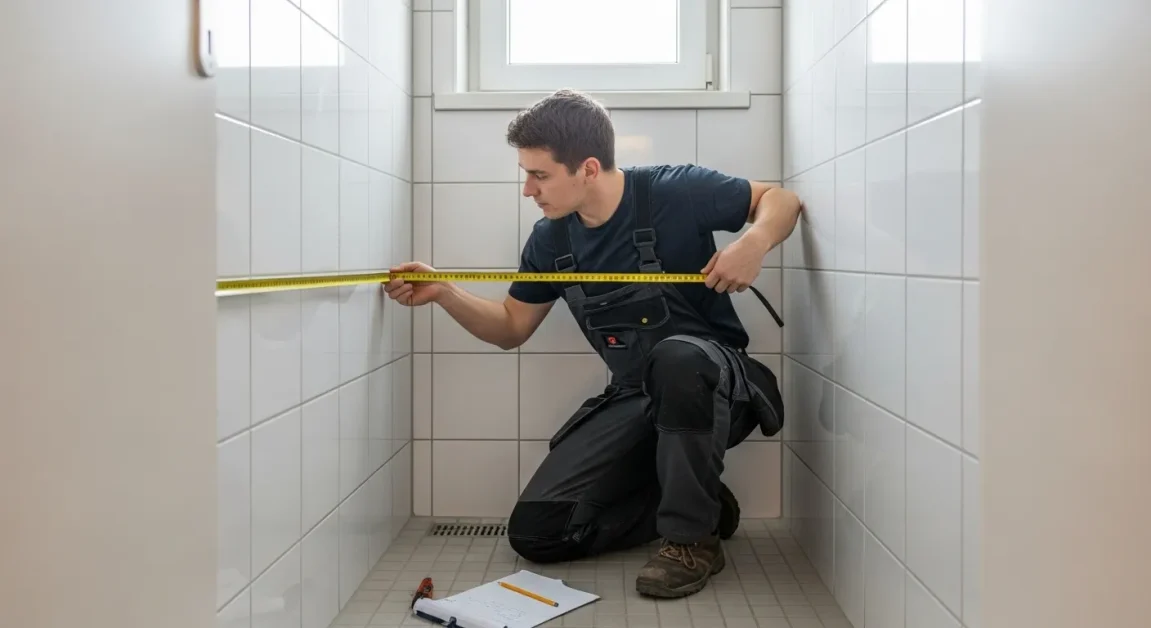
Decide where your sauna will go, indoors or outdoors, and measure your available height, width, and ventilation area.
Mark electrical access points and door clearance to make sure everything fits comfortably.
2. Install insulation and vapor barrier
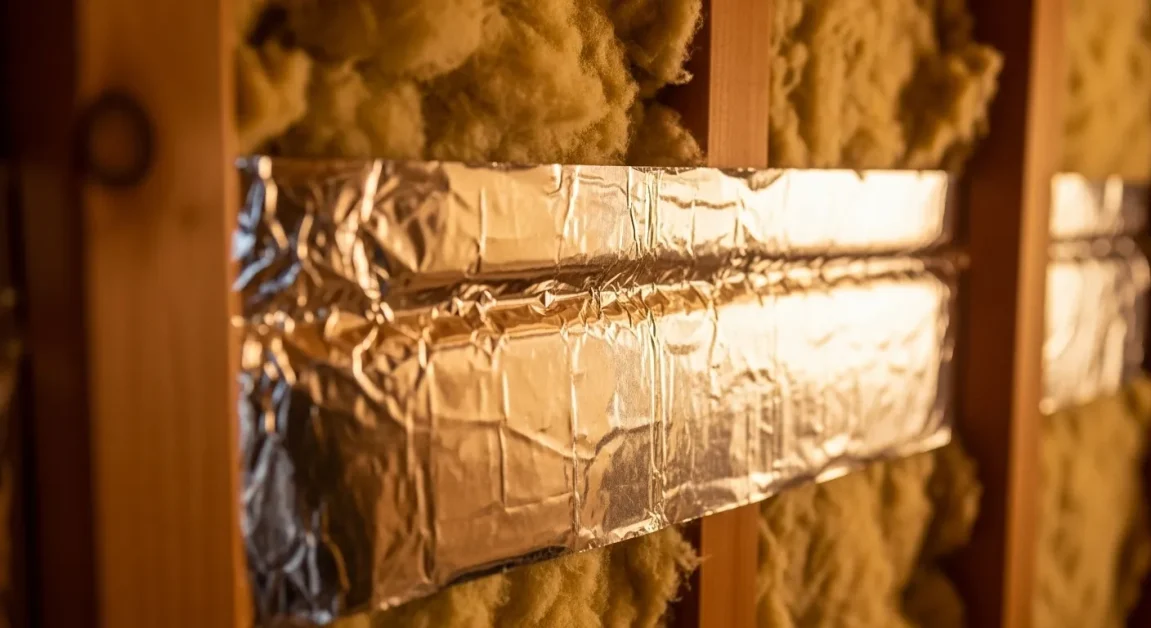
Add insulation behind your wall panels to keep the sauna energy-efficient. Then, install a vapor barrier to protect surrounding walls from moisture.
3. Assemble sauna panels or kit
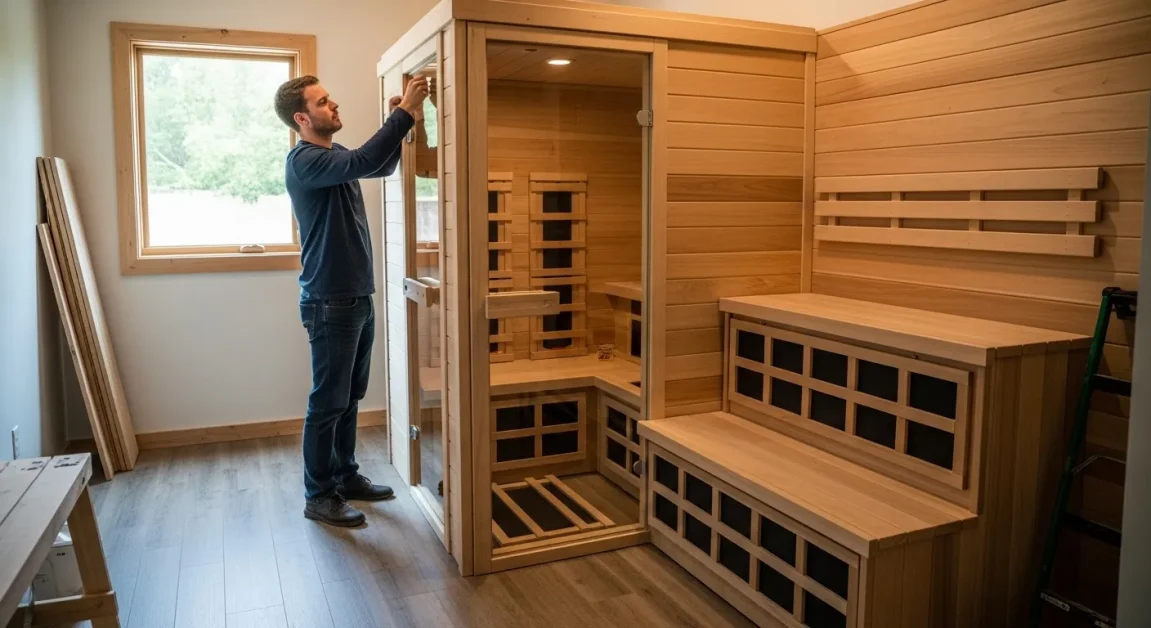
Follow the manufacturer’s directions to attach the wall panels, ceiling, and door. If you’re using a modular kit, most components will lock or screw together easily.
4. Add heater and wiring
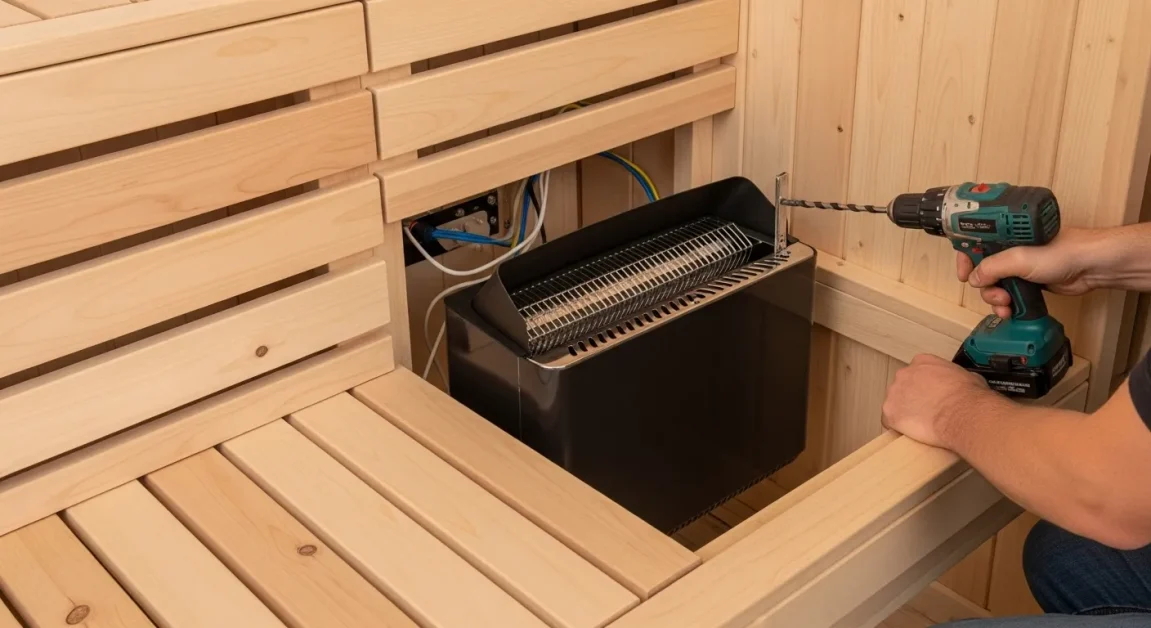
Install your heater unit according to its specifications, ensuring safe clearance between benches, walls, and the heater. Use only certified sauna-grade electrical parts and have wiring checked by a licensed electrician.
5. Test heat and ventilation

Once everything is in place, run your sauna for a short session to test airflow and temperature stability. Adjust vents or stones if the heat feels uneven.
🌿 Wrap-Up
That’s it, your small sauna is ready to go.
With about a day’s work and a modest investment, you can create a relaxing space that adds both value and comfort to your home.
(Tip: Add a towel hook or LED strip lighting for a stylish finishing touch.)
Real-life small sauna ideas
Let’s look at a few stylish examples that show just how creative small sauna designs can get
Corner Spa Nook
A 5×5 cedar sauna with glass doors tucked into a bathroom corner. Perfect for Scandinavian-inspired homes where every inch matters.
Closet Conversion
An unused hallway closet turned into a one-person infrared sauna. Slimline heater panels line the back wall while an LED strip adds warmth.
Outdoor Pod Sauna
A compact barrel-style sauna on a deck or patio. The curved design saves space and creates instant spa-like charm.
Basement Alcove Retreat
Custom L-bench, recessed lighting, and vertical wood slats make a small basement sauna feel high-end, not cramped.
Tiny Home Infrared Suite
Light pine walls, floor-to-ceiling glass, and a compact bench prove even mobile homes can host a spa moment.
If you’re planning to add wellness elements around your sauna, check out our guide on how to dress for the sauna to stay comfortable and safe during each session.
Budget and installation tips
Building a small sauna is often more affordable than most bathroom renovations. The smaller the room, the faster it heats up, which also means lower energy costs over time.
Before you start building, make sure to
- Measure the space carefully (don’t forget door swing).
- Check for proper electrical setup (especially for infrared units).
- Use a vapor barrier behind panels to prevent mold.
- Leave an inch of airflow under the door for circulation.
If you’re DIY-savvy, a prefab kit can cost $1,500–$4,000, while a custom build may range from $5,000–$10,000+ depending on finishes. Hiring pros ensures perfect insulation and heat balance, worth it if you’re aiming for longevity.
Common mistakes to avoid
Even the prettiest small sauna can feel cramped or uncomfortable if these details get overlooked
- Low ceilings make the heat uneven.
- Dark materials shrink the visual space.
- Poor ventilation leads to dampness and mold.
- Oversized benches or heaters waste precious square footage.
When in doubt, go for minimalism, fewer design elements, but each one chosen for comfort and flow.
If you’re curious how sauna sessions affect health goals, our post on how many calories you burn in a sauna breaks down the science behind heat and metabolism.
🧠 The Psychology of Heat and Space
Warmth changes how we feel, literally. The gentle heat, dim light, and natural materials in small saunas create a cocoon effect that calms the nervous system. It’s not just comfort, it’s biology.
A compact sauna feels more soothing because your senses are enclosed and focused. Soft lighting, warm cedar tones, and rhythmic heat mimic natural “safe spaces” like sun-warmed caves or cozy cabins.
Studies in Finnish spa culture show that enclosed warmth can lower cortisol, reduce blood pressure, and even trigger a meditative state.
So when you’re designing a small sauna, think beyond looks. The magic comes from how the space feels, like your own private, stress-free capsule.
📊 Sauna Space Stats: Small vs. Standard
Numbers tell a clear story, smaller saunas are faster, cheaper, and often more efficient than traditional ones.
| Sauna Type | Average Size | Heat-Up Time | Energy Use | Ideal For |
|---|---|---|---|---|
| Compact Infrared | 4×4 ft | 10–15 min | Low | Apartments or condos |
| Traditional Electric | 5×6 ft | 25–30 min | Medium | Standard homes |
| Steam Sauna | 6×8 ft | 40+ min | High | Large bathrooms or spa setups |
A smaller sauna might only use half the power of a standard one, but still delivers the same relaxing sweat session.
That means you can save money on energy while heating up in less time, perfect for busy evenings or compact homes.
💬 Designer Tips: Making Small Saunas Feel Luxe
Even the tiniest sauna can look like a luxury retreat with the right design touches.
“Layering textures is key in small saunas,” says interior stylist L. Moore. “Pair smooth cedar with stone accents or frosted glass to add depth without crowding the space.”
Here are a few pro-level tricks to elevate your small sauna’s design
- Use hidden lighting behind benches or under trim for a spa-like glow.
- Mix matte and glossy surfaces sparingly to reflect light naturally.
- Add a small built-in shelf or niche for aromatherapy oils and towels.
- Choose minimalist controls and concealed heaters for a clean finish.
Little details create big impressions, and in small spaces, they make all the difference.
🧾 Mini Sauna Maintenance Checklist
Keeping your small sauna fresh and safe doesn’t take much time, just a routine. Here’s a quick checklist you can follow to keep it performing like new.
Weekly
- Wipe benches, floor, and walls with a mild vinegar-water mix
- Rinse and dry the heater area
Monthly
- Inspect heater stones for cracks
- Vacuum vents and floor corners
Quarterly
- Reseal wood with sauna-safe oil
- Tighten any loose panels or bench screws
Annually
- Deep clean the entire sauna
- Check insulation, thermometer, and hygrometer calibration
Tip: Print this list and keep it inside a drawer near your sauna. A little upkeep keeps your investment beautiful and efficient for years.
🌿 Wellness Benefits of Compact Saunas
Small doesn’t mean less effective. Research from Finland and Japan shows that 15–20 minutes in a small sauna can deliver the same health benefits as larger spa versions.
Here’s what your compact sauna can do
- Improve blood circulation and oxygen flow
- Support muscle recovery after workouts
- Enhance skin health by opening pores
- Promote deeper, more restful sleep
- Encourage mental clarity and calm
According to a 2022 Finnish study, people who used small home saunas slept 25% faster and reported a 40% improvement in relaxation levels compared to those using traditional gyms or spas.
Your small sauna isn’t just saving space, it’s boosting wellness, energy, and overall balance.
Find More Healing in Style
Relax like never before with our expert tips and top-notch solutions for ultimate relaxation.
Hot Tub Patio Insights
Check out simple tips and creative ideas to build your dream outdoor retreat with Hot Tub Patio.
Learn More
